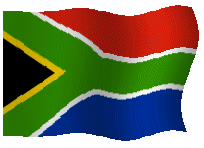
THE HOME WINE COURSE ©

Introduction:
By virtue of South Africa's pivotal crossroads location at the southern tip of the African continent where the cold waters of the Atlantic Ocean meet warm Indian Ocean currents, Cape Town's fledgling wine industry of the late 1600's appealed to traders hailing from every European nation seeking to replenish their stores of palatable wines as they turned the corner on their way to India and the Far East. Consequently excellent quality (rather than abundant quantity) was an early goal of the English, Dutch, and French Huguenots settlers. Today's post-Apartheid sanctions wine renaissance in South Africa is serving to revive that early attention to high quality production with world-class standards. South Africa is the world's 8th largest producer of wine. The country's many cooperatives (of which KWV is by far the largest) account for the majority of total wine production while many estates, private wineries, and wholesaling producers provide the significant remainder. Premium varietals only make up a small percentage of total wine output in South Africa but that is a rapidly changing pattern as export markets continue to grow. The most wonderful thing about South African wines could very well be the distinctive European (particularly French) character of the wines that are sold for so much less than comparable wines from Europe or the United States.
Levels of Quality
In 1973, wine certification laws were enacted, long overdue, as labeling practices up until then were woefully inaccurate and therefore misleading. In 1992-3, the WO (Wine of Origin) laws were updated so as to simplify the certification system. Wines certified by South Africa's Wine & Spirit Board are thereby guaranteed to be from the vineyard location designated on the label, made from the particular varietal or blend so stated, and from the vintage appearing on the label. This information does not guarantee a wine's quality however, and the WO laws don't require specific vineyard practices or harvest yields (as is required in Europe). Chaptalization (addition of sugar to unfermented musts) is not allowed but acid adjustment is permitted. A Wine & Spirits Board tasting panel has the final say on whether a wine passes certification but it is typical for this panel to only reject the most flawed wines. High quality is more realistically assessed through the Veritas awards certain wines are given at the annual South Africa National Wine Show and through independent reviews of the industry. Other adaptations to the WO laws are in process, with regional varietal distinction high on the list of proposed refinements.
Grape Types
South African viticulture is quite diverse in terms of premium varietal wine production. The workhorse grape is Chenin Blanc, called Steen by many producers. Steen accounts for about 30% of all wine produced in South Africa. It is used to make dry, semi-dry, dessert-level sweet wines (botrytis character and sherry-style) and sparkling wines. Muscat (originally called Hanepoot) is heavily planted as well and is used to make sweeter-style whites typically. For drier style whites the entire range of varietals is being utilized, including Chardonnay, Sauvignon Blanc, White Riesling, Semillon, Columbard, Pinot Gris, and Gewurztraminer. Many wines made with Chardonnay are particularly refreshing, often showing crisp, high-mineral essences, á la French Chablis. The Sauvignon Blanc wines can be quite close in style to the grapefruity wines of France's Sancerre district. Great variety holds true for the red wine category as well where Cabernet Sauvignon reigns supreme, followed by Merlot, Cabernet Franc, Shiraz, Cinsault (called Hermitage here), Gamay, Pinot Noir, and the unique South African crossbred varietal known as Pinotage. The Cabernet Sauvignon and Cabernet-blend wines of South Africa show great promise as value alternatives (albeit more earthy and rustic) to expensive Bordeaux and California Bordeaux blends. The controversial, iodine-scented Pinotage (a cross between Pinot Noir and Cinsault) in the hands of a master such as Kanonkop's Beyers Truter can taste remarkably close to an excellent Cote de Nuits red Burgundy. This is quite rare, however, as the herbaceous Cinsault character typically dominates in Pinotage wines.
Regions of Production
Historically, the vineyards developed first were located in the Constantia district just south of Cape Town. Subsequently, valleys to the east of the city were opened up to wine production. These areas include the famous red wine region of Stellenbosch and the excellent Paarl region just north of Stellenbosch. Further east, the French Huguenots set up their operations in the now famous Franschhoeck Valley. These four districts comprise the coolest growing sites close to Cape Town and are held in the highest regard today. With increasing demand other outlying districts were planted to the wine vine including the eastern regions of Tulbaugh, Worcester and Robertson along the Breede River, and the arid, northern Oliphants River region. Other northern areas are being developed, such as the Klein Karoo and Swartland but these districts aren't particularly well-suited to the finest wine varieties. Cape District is a common designation for wine blends made with fruit from these outlying regions of South Africa
Summary
In general, we would say that the wines of South Africa are like a hypothetical cross between the rather austere Old World style of Europe and the more fruit-forward, accessible wines of the United States and Australia. In fact, every imaginable wine style can be found in South Africa; the sign of a mature wine industry. However look for more changes as experimentation is the current order of the day in this forward-looking African nation.
Tasting Notes: